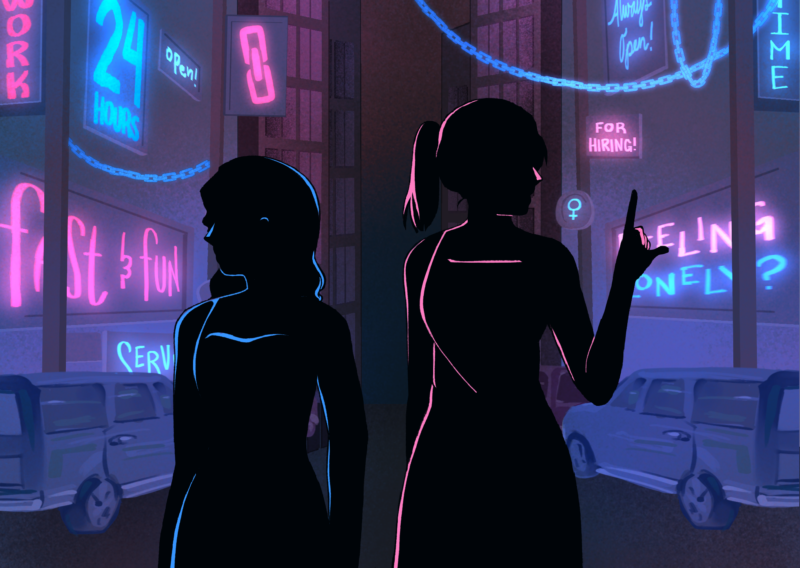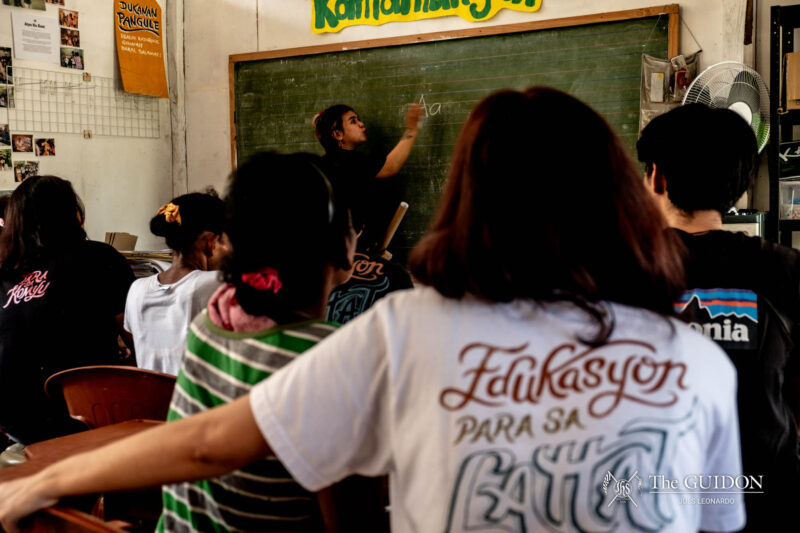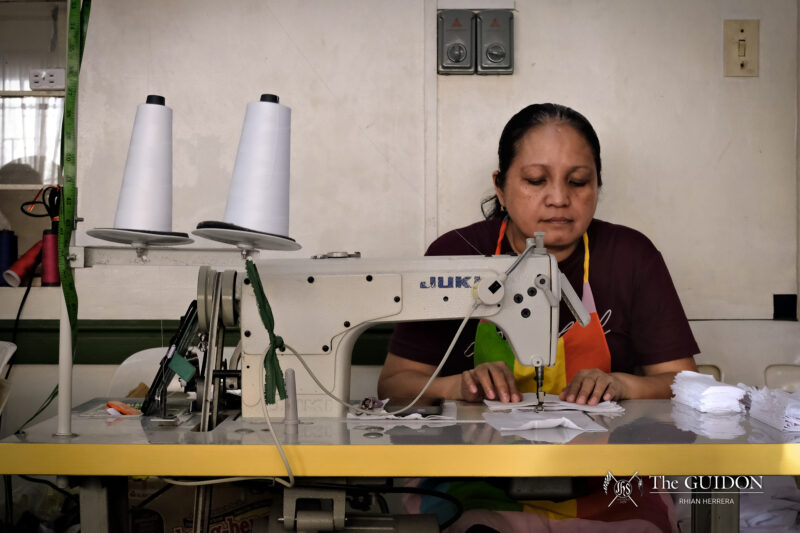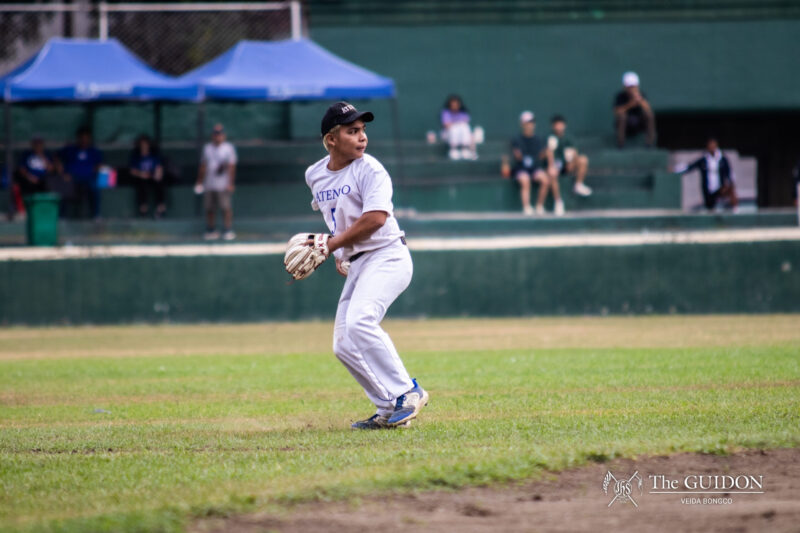Traversing through Binondo’s labyrinthine streets, adorned with oriental lanterns and Chinese translations, is an encounter you can’t miss. It’s easily accessible via any mode of transportation, and though you’ll most likely lose yourself among the hustle and bustle of the ever-persistent crowd, you will gladly persevere through the swarm of people in your search for excitement and adventure. The streets of Binondo hold such an air of mystery—a charm true to only the rich, historical sites of Old Manila. It’s time to experience this charm, leave your cozy, sheltered Atenean life and dive into the melting pot that is the Chinese-Filipino culture found in Chinatown.
Let’s face it, we all know the name, but the prospect of travelling so far from the comforts of Quezon City (assuming you live nearby, of course) seems like such a daunting task. Worry not! The GUIDON has you covered with everything you’ll need to know to prepare for Manila’s little China—and it’ll cost you only about 500 bucks.
Pre-Binondo necessities
If you’re wondering how to prepare for a visit to Chinatown, sophomore Jade Uy suggests that you “show less skin so you don’t attract too much attention.” After growing up in Binondo, she says that aside from receiving unwanted stares from passers-by, you probably won’t be able to haggle successfully wearing short shorts as compared to haggling in jeans and an old t-shirt. Of course, it’s a great plus to be in comfortable footwear (i.e. sandals) too, as your main transportation will be your legs and feet.
Brushing up on your Chinese skills would also be helpful, because Chinese shop-owners tend to be more lenient to those who can speak the language. You needn’t be too anxious though, if you don’t know any Chinese beyond “Ni hao ma?” Most of the shop-keepers are fluent in Tagalog, and you’ll even bump into a few that speak English better than you do.
Another essential to bring along is your appetite! You’ll need to bring about P500 with you (and lots of loose change) for the food you’re sure to take home as pasalubong.
Aside from an impassioned desire for food, there is something that first-timers should be bringing with them. “If you’re going to Binondo for the first time, have someone from Binondo or someone familiar with the place go with you!” stresses sophomore Iris Tan, also a Binondo native. “Binondo is crazy! You’ll get lost if it’s your first time there,” she adds. So unless you have a most superb sense of direction or are very adventurous, it would be a good idea to bring along a Binondo frequenter.
Besides a healthy hankering for good hopia and a Chinatown-savvy friend, we also suggest that you bring along a camera, because Binondo is a beautiful place to see a whole new side of Manila—one that still retains some of its time’s best and grandest memories.
Means of transportation
There really is no better way to get to our destination besides taking the LRT. A ticket to Recto is P14 from Katipunan, which will save you the draining trip by a cab all the way to Manila, as well as the extra P200 you would have had to pay.
The long train ride will take about 30 minutes, so sit tight but don’t tire yourself out just yet, because the train ride back will be a lot more draining. Take it from sophomore Rachel Nocom: “The ride there isn’t so bad,” says the Binondo first-timer. “It’s definitely not as tiring as the trip coming from there [since you walk around the place the whole time].”
Arriving at Recto station, be ready to be bombarded with a plethora of sights and sounds. People bustling into the LRT station, pedicab and jeepney drivers calling out for passengers, food and accessory vendors and the like are the first people you’ll encounter. It will most definitely not smell like spa aromatherapy candles, but you can expect it to be an interesting new sensation for your nose. The smell of carbon monoxide, food, and sweat will fill your olfactory bulbs in an overwhelming way, but you will soon get used to it.
From here, a pedicab ride will cost around P20 for a single trip. It might cost more for those traveling with a companion or two, but haggling for lower prices is the way to go, even this early on.
Binondo proper
The pedicab driver will take you to Binondo Church, which will be your point of reference in case you actually do get lost (all you’ll have to do is ask where the church is and you’ll be sure to find your way back). If you’ve never been inside Binondo Church, it’s time for you to finally visit the famous old site (and make a wish while you’re at it). Walking into the church is like stepping into a sanctuary from the mass of confusion and pollution outside. Settle on one of the benches and try a little people-watching. You’ll see people from all walks of life gathered there in reverent prayer in this large yet ageing monument. Despite the dark stone walls and the graying façade, it still remains quite the stunning memento to Binondo’s golden years.
Taking a last bow to the altar and stepping back out into reality, you’ll realize that you’re done with the hard part. The main road in Chinatown is adjacent to Binondo church: Ongpin Street. Walking along this street or the intersecting alleyways, you’ll already be able to cover most of the shops worth visiting. President’s Tea House is just a few meters away, as well as famous Chinese groceries and Chinese herbal medicine stores.
What’s the weirdest thing you might come across? “They sell dried cockroaches, rats, ginseng, black duck, random plants, etc. You can find them all over Ongpin,” says Jade. True, Chinatown is a place full of surprises.
Food for the gods
One of the most coveted things in a Binondo trip would naturally be the food. President’s Seafood Restaurant is a Mecca of sorts. “I haven’t met a Chinese family that hasn’t eaten at President’s,” gushes Iris. “Their dimsum is so good.” Golden Fortune is another favorite—you get your money’s worth and you know you won’t leave the place unsatisfied. According to Iris, they have the best vegetable tofu. Jade also recommends this restaurant, “If you eat there from 9pm onwards, you get a discount,” she mentions.
For some, coming to Binondo means searching far and wide for the best of the best; and for Cathy Lopez, also a Binondo first-timer, it was all about the xiao long bao, a soup-filled dumpling regarded as a delicacy in mainland China. “It’s so good and affordable,” she quips. “I haven’t found good xiao long bao anywhere else.”
Of course, Lord Stow’s, best known for their egg tarts can also be found in here, situated in a small corner right at Chinatown’s welcoming arch. Stopping over for a box of six and resting in the comfort of the air-conditioned café is a welcome respite from walking around the maze-like streets.
Not just for Chinatown
Chinatown won’t be the only thing you’ll enjoy about traveling to Binondo. Even if you don’t end up buying anything big (like the wholesale furniture and cameras you can get along one of the more obscure streets), you’ll be most satisfied with yourself for having survived the adventure. Surely you’ll end up at home, tired as ever and your mother will probably ask why you smell like dumplings, but the journey is well worth it.
Sure, you won’t be able to see the silk of the land of China as Marco Polo did, but in the little slice of it that is Chinatown in Binondo, you can still feel like quite the adventurer. Fruits, hopia, and xiao lung bao aside, you just might come home with more than you had originally expected. ν






